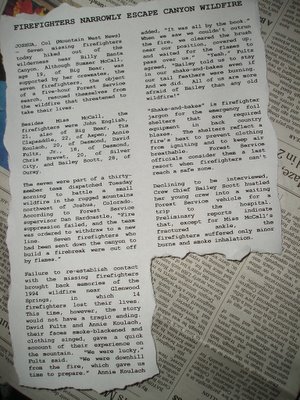Reading through the RAIN
A couple of non-fiction books I recommend are TALK TO THE HAND by Lynne Truss and OUR ENDANGERED VALUES by Jimmy Carter.
TALK TO THE HAND proved to me that someone in this world is more of a curmudgeon than I am. Does everything everybody else does bug you? Then TALK TO THE HAND is a book for you. Not quite as useful as Truss's EATS, SHOOTS AND LEAVES, it is still filled with British humor. (If you haven’t read “WATCHING THE ENGLISH” by Kate Fox, you might want to give that a look, too, especially the sections on British humor.)
In OUR ENDANGERED VALUES, President Jimmy Carter provides evidence and commentary to support his two propositions: that “fundamentalist” Christianity actually contravenes traditional Christian values and that the alliance of fundamentalist Christians and right-wing Republicans is turning the U.S. from traditional American values. The Baptist church Carter describes—the one in which he was raised—isn’t much different from my childhood church. However, whereas I see organized religion as a large part of most problems in the world, Carter sees religion as a force for good if it is turned into good works and not into judging all those who don’t believe as you do. (But don’t look to Carter for support for gay marriage; he’s against it.) At the time I read this, I had little hope that the U.S. government, with all three branches in the hands of right-wing Republicans, would change course—or that Democrats would be up to the challenge of regaining power or even moral authority. Since then, I’ve seen glimmers of hope, just glimmers.
Other than those two books, it’s been a feast of light fiction for me.
Having seen the movie “Brokeback Mountain,” based on a short story by Annie Proulx, I decided to read BAD DIRT, WYOMING STORIES 2 by the same author. (She also wrote SHIPPING NEWS, which I strongly recommend to anyone who hasn’t read it.) This little book is full of stories and tall tales about the eccentric residents of Elk Tooth, Wyoming. Its mix of splendid humor and humanity is deeply satisfying.
PREDATOR by Patricia Cornwell and FIRE SALE by Sara Paretsky are fine diversions for a rainy afternoon or a trip to the beach. (Summer is coming, right? Or spring at least?)
In PREDATOR, Kay Scarpetta and company find links between apparently unrelated deaths and follow those links to a man called Hog. Although the plot is satisfyingly intricate, the end seems rushed. (Monster die, bye-bye?) And does EVERYBODY in a Scarpetta novel have to be so darned depressed?
FIRE SALE brings back my favorite private detective. Nearly blown up in a South Chicago flag factory explosion, V. I. Warshawski backtracks to tell us what led up to the big boom and then goes on to solve the mystery of why the factory and its owner went up in smoke. In the process, V. I. coaches a girls’ basketball team and locks horns with the family that owns By-Smart, a huge chain of stores that runs rough-shod over suppliers and poor employees alike. (No, By-Smart, not Walmart.) When I finished this Paretsky novel, I felt, as I always do, that this was the best book in the series so far.
Finally, saving the best for last, there’s NIGHT WATCH by Sarah Waters. Leaving Victorian England behind for this novel, Waters takes us to London during and immediately after World War II. The story is told in three parts. In 1947, the characters (Julia, Kay, Helen, and Duncan) try to live with the consequences of choices made during the war. In 1944, their actions precipitate changes in the relationships among them. In 1941, the sequence of events is set in motion. No, I didn’t relate the parts backwards; Sarah Waters did. This book proves that every story needs a beginning, a middle, and an end, but not necessarily in that order.
So pick up a book—or start typing.



